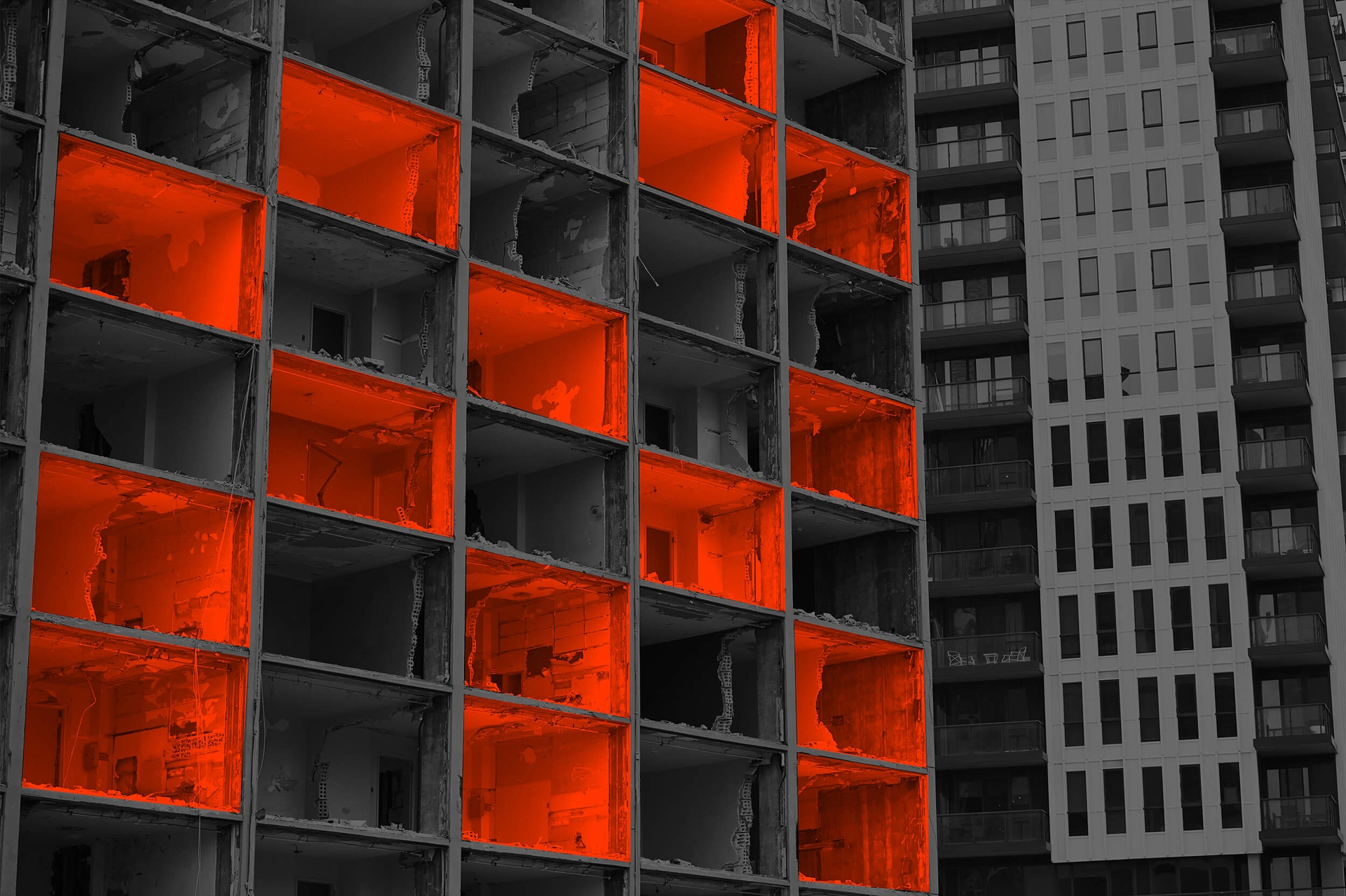
Toronto, Canada
“I knew 11- and 12-year-olds who were already selling drugs. Gunshots woke me up in the night; I’d go back to sleep as if they were nothing. I’d walk to elementary school past people who were shooting up or suffering from mental illness, ranting at the sky or talking to plastic baby dolls … All this seemed normal to me because I didn’t know anything different.”Nicholas Ashakah
Issues explored: access to housing, displacement, gentrification
Nicholas Ashakah
A personal reflection by Nicholas Ashakah
"I grew up in Regent Park in the 2000s. My dad left before I was born, so it was just my mom and I. She worked long hours as a nurse, and I was alone a lot. We bounced around between apartment complexes, living wherever we could afford. Some of my earliest memories are of Blevins Place, one of Regent Park’s original high-rises. The building had its own daycare and it was close to my school, but there was garbage in the lobby and a notice above the communal washing machines warning that you might get bedbugs if you used them. At the time, Regent Park was still a rough area. I knew 11- and 12-year-olds who were already selling drugs. Gunshots woke me up in the night; I’d go back to sleep as if they were nothing. I’d walk to elementary school past people who were shooting up or suffering from mental illness, ranting at the sky or talking to plastic baby dolls. A homeless man’s Rottweiler once bolted from his leash and chased me until my mom threw herself on top of it and held it down. All this seemed normal to me because I didn’t know anything different. And yet I always felt like something bad could happen at any moment."
As a kid in Regent Park, I was headed for a life of gangs or drugs or worse | Toronto Life
Other Toronto stories and resources:
An opinion from Martine August, Associate Professor, University of Waterloo School of Planning: Toronto’s Regent Park is being redeveloped from a public housing community into a mixed-income, mixed-use neighbourhood. Although mainstream accounts often point to the positive impacts of this process, many tenants and community workers feel that “revitalization” is increasingly leading to displacement.Initiated in 2002, the historic redevelopment will dramatically transform Canada’s first and largest public housing community. Physically, the former expanse of parks, walking paths and low-rise apartments will be replaced with a dense network of new streets and towering glass condos. Socially, the once exclusively public housing community will see the construction of 5,400 new condos. Once complete, only a quarter of the homes in Regent Park will be subsidized for low-income tenants.
Redevelopment is taking place in several stages over many years. So far, two rounds of redevelopment have transformed almost half the community. The next round of demolitions is targeting the southeast quadrant of Regent Park, and this spring hundreds of tenants received their orders from Toronto Community Housing (TCHC) to relocate. The majority of tenants relocated this spring will be forced to leave their community, often to distant corners of the city. While moving is stressful for anyone, forced relocation can be particularly traumatic. For people whose work, childcare, schools, healthcare, friendships and support networks are in Regent Park, revitalization is a disruptive force, not a benevolent one. Like many others, Rajani (not her real name) has been offered distant relocation units, and as yet does not know where she will live.
“It’s stressful; it’s like mental, physical, and emotional torture,” she explained. “They are making us panic. My social life, mental health – everything is affected.”
Rajani’s kids will be uprooted in the middle of the school year, piling on the stress caused by a recent family loss. Her family also has health problems, but these issues are not considered by TCHC. Instead, families are moved based on a lottery system. “Our whole life is a lottery now,” says Rajani. “It’s like a casino – they are playing games with our lives.” Many working in Regent Park’s agencies see the negative impacts first-hand. One community worker explained: “Our clients are coming to us in panic about the far-flung places they are being dispersed to, and the negative impacts this is having on their health and well-being are obvious.”